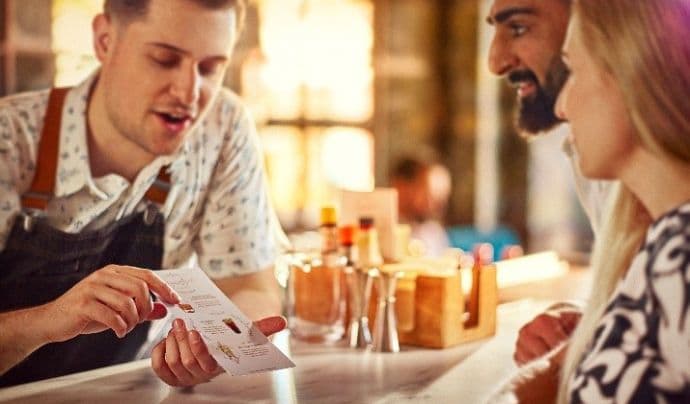A GUIDE TO OPTIMISING YOUR MENU FOR PROFITABILITY
A drinks menu is one of the most powerful tools in your venue. Learn how to drive profitability by influencing drink choices and overall customer satisfaction.
Estimated reading time: 7 minutes
A drinks menu is one of the most powerful tools in your venue. Not only do they inform customers of exactly what you sell but, when carefully crafted, act as an extension of your venue’s image and identity, driving profitability and influencing drink choices.
Menu engineering is a strategic approach used by food and beverage establishments to optimize menu offerings for profitability and customer satisfaction. It involves analyzing and strategically designing the menu to highlight high-margin items, encourage customer choices and enhance overall profitability.
As a first step, you need to gather data on sales and item costs to effectively compare the profitability between serves. To compare different drinks effectively, you need to compare ‘like with like’; to do this you should convert cost and profit to percentages.
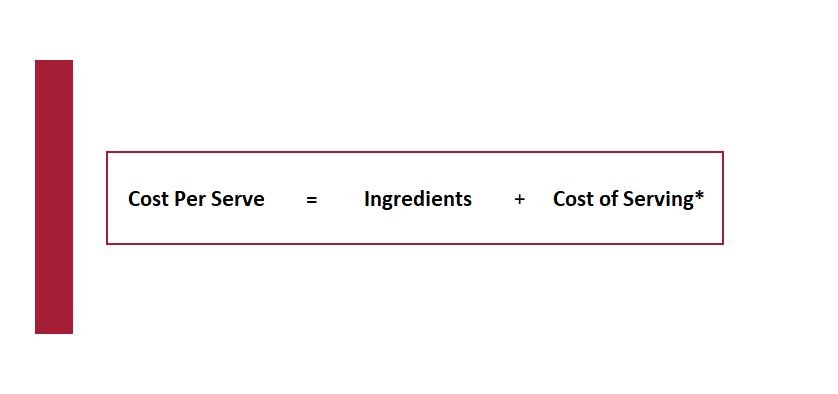
Calculate Cost Per Serve
*Cost of serving = specialist equipment, labour cost (bartender time) and utility costs (power/water), but different accounting practices may apply, and these can be grouped separately. In this case we’ll include a 5% to 10% miscellaneous cost to each drink to cover garnish etc. Labour and utilities costs as such will be included in operating and captured separately.
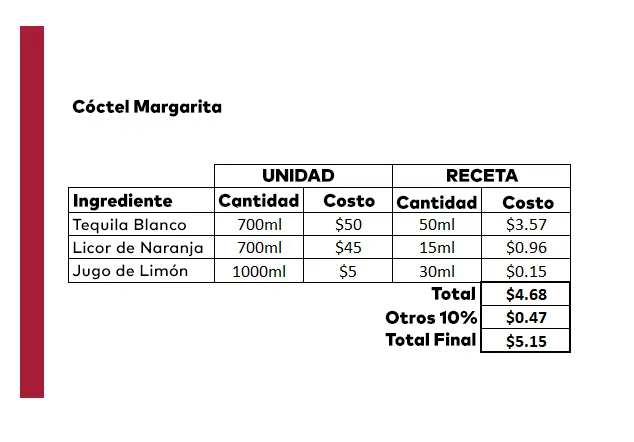
Example calculating cost per serve
Using the above formula, you can ascertain the cost of a serve like this example.
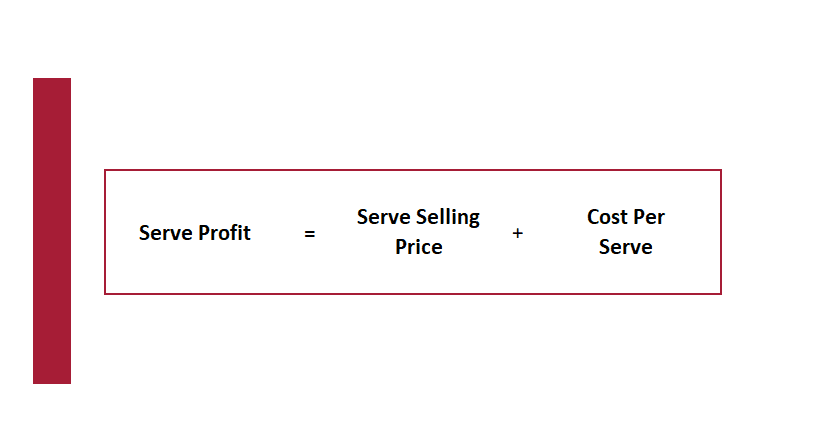
Calculate Serve Profit
To ascertain the profit of selling one Margarita in the bar, we will use this formula:
Serve Profit = Serve Selling Price – Cost Per Serve
In this example, the Margarita cocktail is selling for $15 on the menu.
Hence the serve profit = $15 - $5.15 = $9.85.
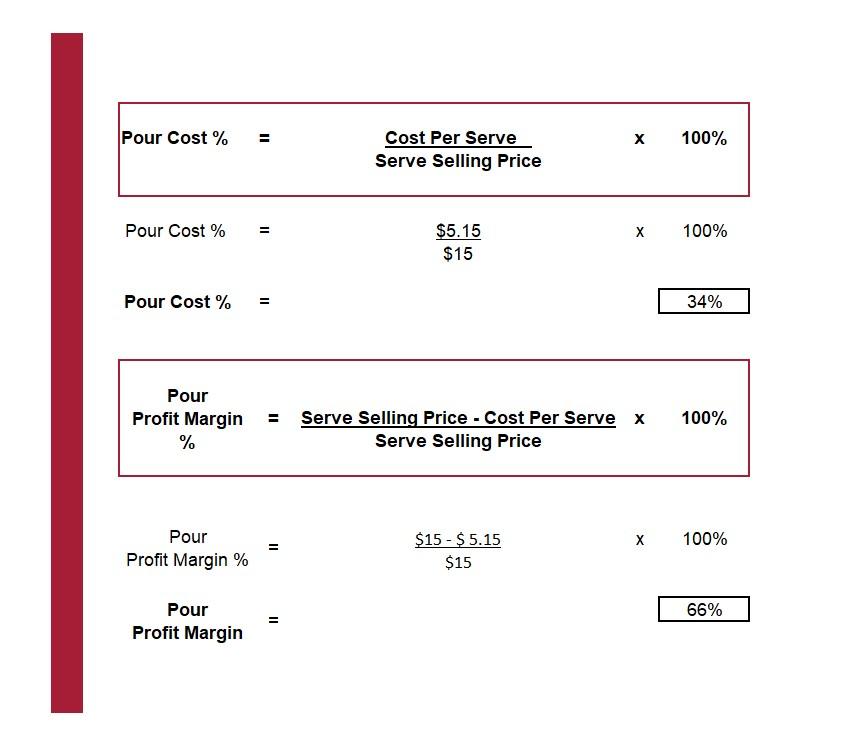
Example calculating serve profit
In this example, the Margarita cocktail is selling for $15 on the menu.
Hence the serve profit = $15 - $5.15 = $9.85.
However, profit alone does not allow to compare drinks with different sale prices, so now we need to calculate the Pour Cost % and arrive at the Profit Margin %.
Analyse Profit Margins
While a higher Pour Cost, as a percentage of the selling price, reflects a lower profit margin, it is important to note that profit margin % is not the only metric to be considered. The % will vary widely between very low-cost and high-cost items. A carbonated soft drink costing $1 that is selling for $6 will have a profit margin % of 83% and a champagne costing $80 priced at $150 will only have a profit margin of 47%! On the surface, it seems that the soft drink is much more profitable but in actuality, the profit from the soft drink is $5 while the champagne generated $70 profit. High-cost items have to be priced at a lower profit margin % to not price the item out of the customer’s consideration.
Consider each menu item in terms of both profitability and popularity for the next step of the menu analysis.
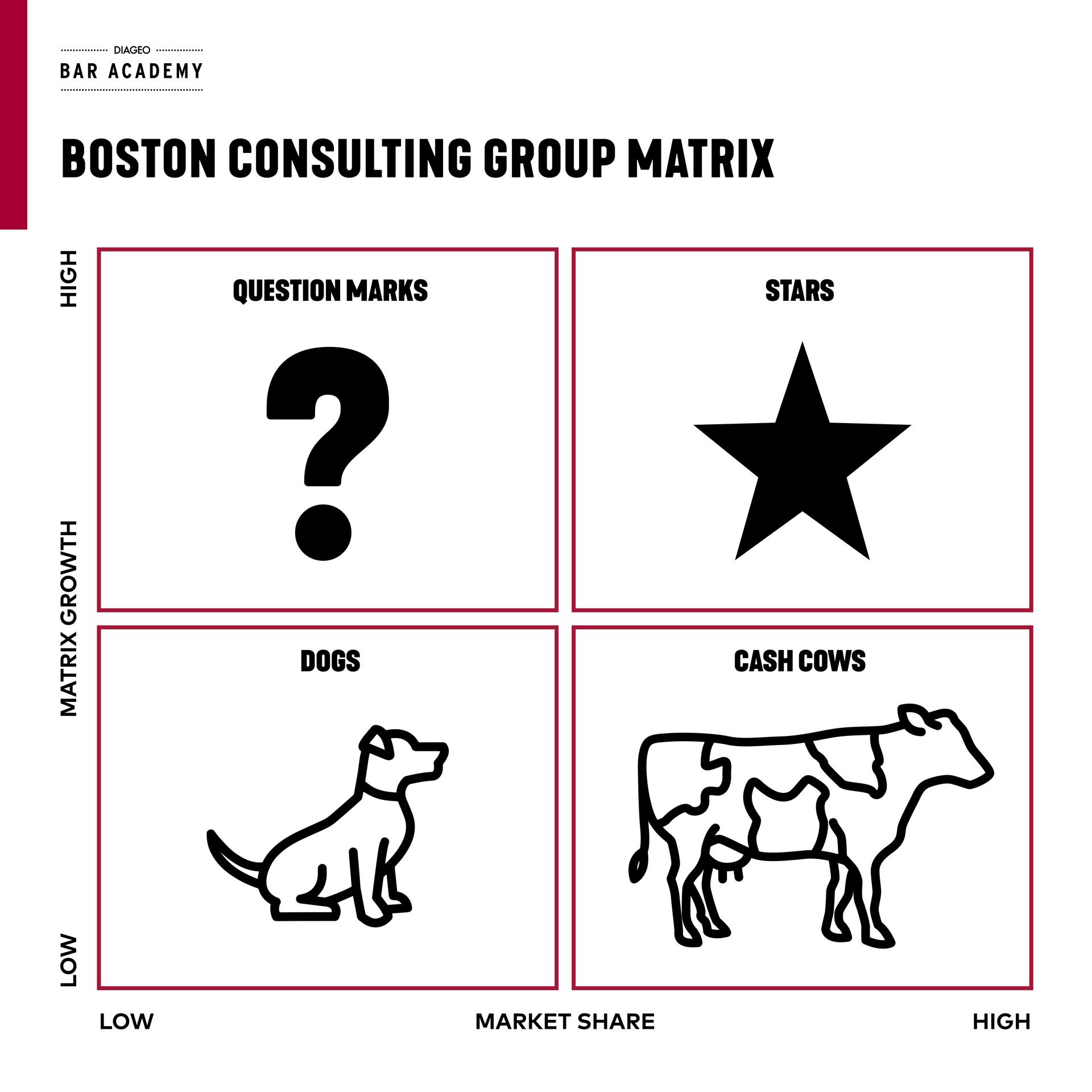
THE BCG MATRIX
Also known as the BCG Matrix (Boston Consulting Group Matrix), this is a strategic tool used for portfolio analysis and management. It was developed by the Boston Consulting Group in the 1970s and is widely used by businesses to group products or services based on their market share and growth rate. The matrix helps businesses make informed decisions about resource allocation, investment and strategic planning. The Boston Matrix categorises products into four quadrants as seen below. Most POS (Point of Sale) systems will be able to easily produce the data to inform you on the quantity of sales over a specific period of time (best to review performance of items monthly).
Stars
(High Popularity, High Profitability)
These are menu items that are both popular among customers and have high profit margins.
Recommendation: Highlight these star items on the menu, place them in prime spots and consider offering them as part of combos or promotions to further increase their popularity.
Cash Cows
(High Popularity, Low Profitability)
These are menu items customers frequently order, but their profit margins are relatively low.
Recommendation: While cash cows may not contribute significantly to profitability, they attract customers. Consider increasing prices slightly to improve profitability without discouraging customers. Alternately-examine and reduce cost of serve (without sacrificing quality).
Question Marks
(Low Popularity, High Profitability)
These are menu items with high-profit potential, but they are not as popular among customers.
Recommendation: Experiment with marketing efforts to promote these items and increase their visibility. Offer limited-time specials or pair them with popular items to encourage customers to try them. Consider renaming/changing the description and training staff to recommend the drink.
Dogs
(Low Popularity, Low Profitability)
These are menu items that neither generate high profits nor are popular among customers.
Recommendation: Rethink the serve ingredients/ description to increase profitability. If efforts to increase popularity and profitability are unsuccessful, consider removing them from the menu. Focus on items more likely to be enjoyed by customers and bring in revenue.
Using the BCG matrix
Using sales data and categorisation from the BCG matrix, a business would be able to take the following action:
- Focus and prioritise profitable items by positioning and highlighting them on the menu (such as boxes or images).
- Offer promotions, combos or limited time specials to boost popularity of certain items (question marks) and increase average spend.
- Phase out low-performing items that are taking up shelf space and money.
- Revamp recipes to improve appeal and profitability.
This will benefit your venue because:
- Profit is maximised.
- Customer satisfaction will be increased.
- No more decision overload / paralysis.
- A smaller, well-crafted menu allows staff to specialise and excel in the items offered.
- Better quality control.
- Faster service.
- Reduced wastage and spoilage.
- Smaller menu allows better adaptivity to trends and seasonality.
Using the Boston Matrix for menu engineering can provide a structured and strategic approach to optimising your venue’s menu offerings; by making data-driven decisions to strike a balance between customer preferences, variety, and profitability. Always conduct regular reviews on the performance of menu items and be prepared to adjust based on customer feedback and changing trends.
Sign Up Today
Empower your team to keep up with industry trends, learn from the experts and discover invaluable resources for their bar career by encouraging them to sign up to the Diageo Bar Academy for free.
